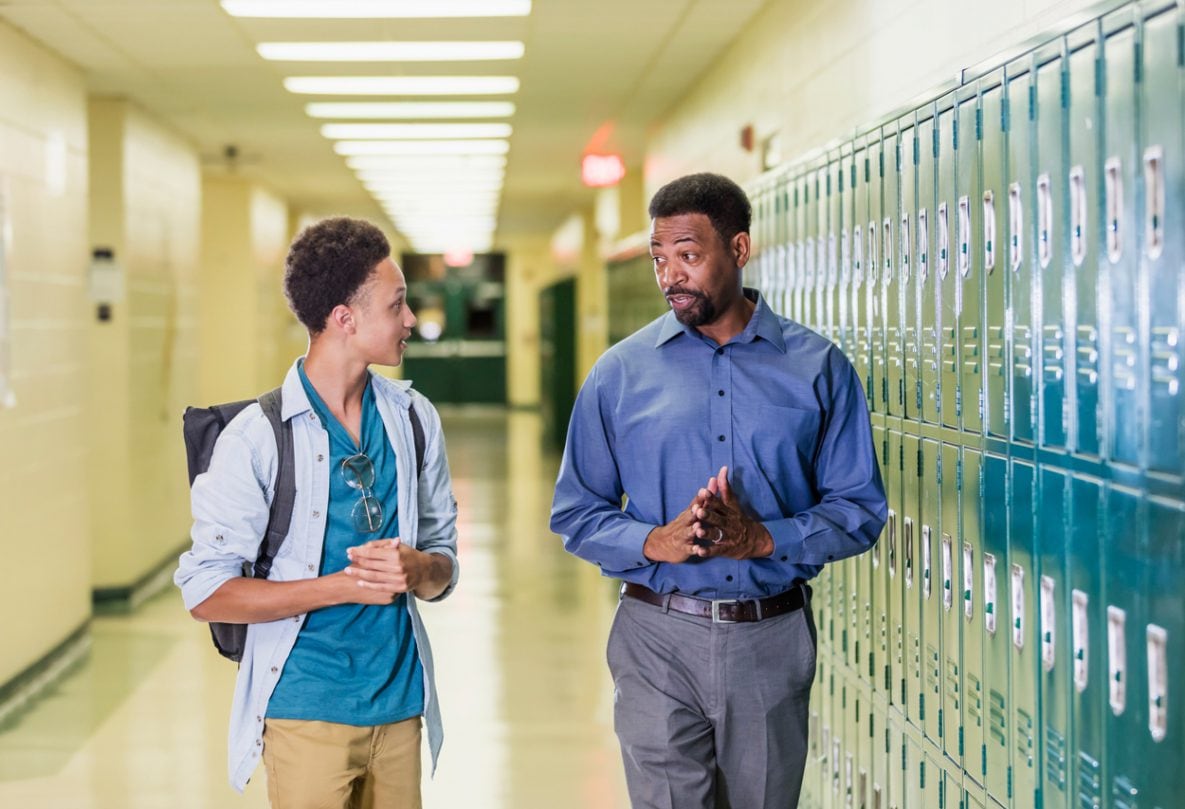School Connectedness Helps Students Thrive

School connectedness is when students feel that adults and peers in school care about their learning as well as about them as individuals. This includes a sense of being cared for, being supported, and belonging at school.
Schools play a critical role in promoting students’ health and development and can take action to help students feel connected.
Why is Connectedness Important?
When youth feel connected to their school, they are less likely to experience:
- Poor mental health
- Sexual health risks
- Substance use
- Violence
Other Benefits of Promoting School Connectedness
School Connectedness and Health Equity
School connectedness is beneficial to all students, but not all students benefit equally. Youth who report experiencing racism, youth from racial and ethnic minority groups, and youth who identify as LGBTQ+ often feel less connected at school.
Schools can play an important role in putting in place connectedness strategies that are inclusive and centered on reducing health disparities.
School Connectedness and Resilience
The COVID-19 pandemic has resulted in disruptions to school operations, and increased stress and trauma for many youth and their families. CDC research shows that youth who reported feeling more connected at school during the COVID-19 pandemic were less likely to report poor mental health even when they attended school virtually
School Connectedness has Lasting Effects
School connectedness has long lasting effects on health and well-being. Youth who feel connected at school are significantly less likely to experience health risks related to sexual health, substance use, violence, and mental health in adulthood.
- Wilkins NJ, Verlenden JV, Szucs LE, Johns M. (2022) Classroom management and facilitation approaches that promote school connectedness. Journal of School Health. doi: https://doi.org/10.1111/josh.13279
- Steiner RJ, Sheremenko G, Lesesne C, Dittus PJ, Sieving RE, Ethier KA. Adolescent connectedness and adult health outcomes. Pediatrics. 2019;144(1)
- CDC. Youth Risk Behavior Surveillance—United States, 2019. MMWR Suppl 2020;69(1):1-83.
- Hertz MF, Kilmer G, Verlenden J, Liddon N, Rasberry CN, Barrios LC, Ethier KA. Adolescent mental health, connectedness, and mode of school instruction during COVID-19. Journal of Adolescent Health. 2022;70(1): 57-63
- Verlenden JV, Pampati S, Rasberry CN, Liddon N, Hertz M, Kilmer G, Viox MH, Lee S, Cramer NK, Barrios L, Ethier KA. (2021). Association of children’s mode of instruction with child and parent experiences and well-being during the COVID-19 pandemic—COVID Experiences Survey, United States, October 8-November 13, 2020. MMWR Rep 2021;71(11): 369-376
- Krause KH, Mpofu JJ, Underwood JM, Ethier KA. The CDC’s Adolescent Behaviors and Experiences Survey–Using Intersectionality and School Connectedness to Understand Health Disparities During the COVID-19 Pandemic. Journal of Adolescent Health. 2022 May 1;70(5):703-5.
- Pampati S, Andrzejewski J, Sheremenko G, Johns M, Lesesne CA, Rasberry CN. School climate among transgender high school students: An exploration of school connectedness, perceived safety, bullying, and absenteeism. The Journal of School Nursing. 2020 Aug;36(4):293-303.
- Jones SE, Ethier KA, Hertz M, DeGue S, Le VD, Thornton J, Lim C, Dittus PJ, Geda S. Mental health, suicidality, and connectedness among high school students during the COVID-19 pandemic—Adolescent Behaviors and Experiences Survey, United States, January–June 2021. MMWR supplements. 2022 Apr 1;71(3):16.
- Wilkins NJ, Krause KH, Verlenden JV, et al. School Connectedness and Risk Behaviors and Experiences Among High School Students — Youth Risk Behavior Survey, United States, 2021. MMWR Suppl 2023;72(Suppl-1):13–21. DOI: http://dx.doi.org/10.15585/mmwr.su7201a2.

